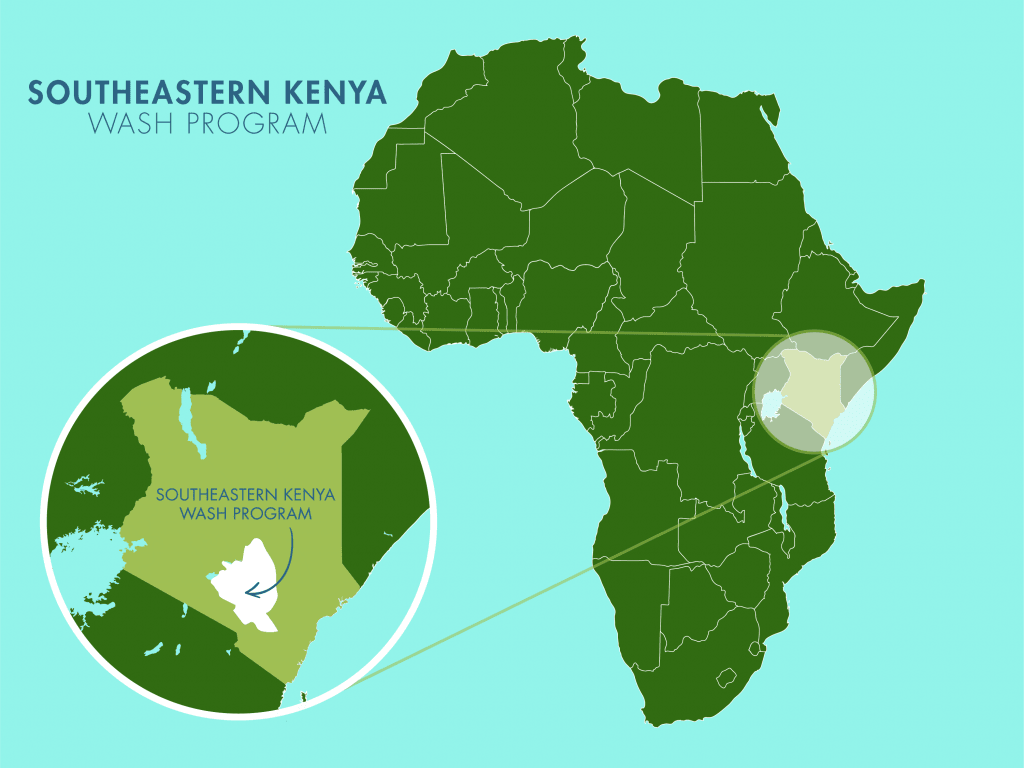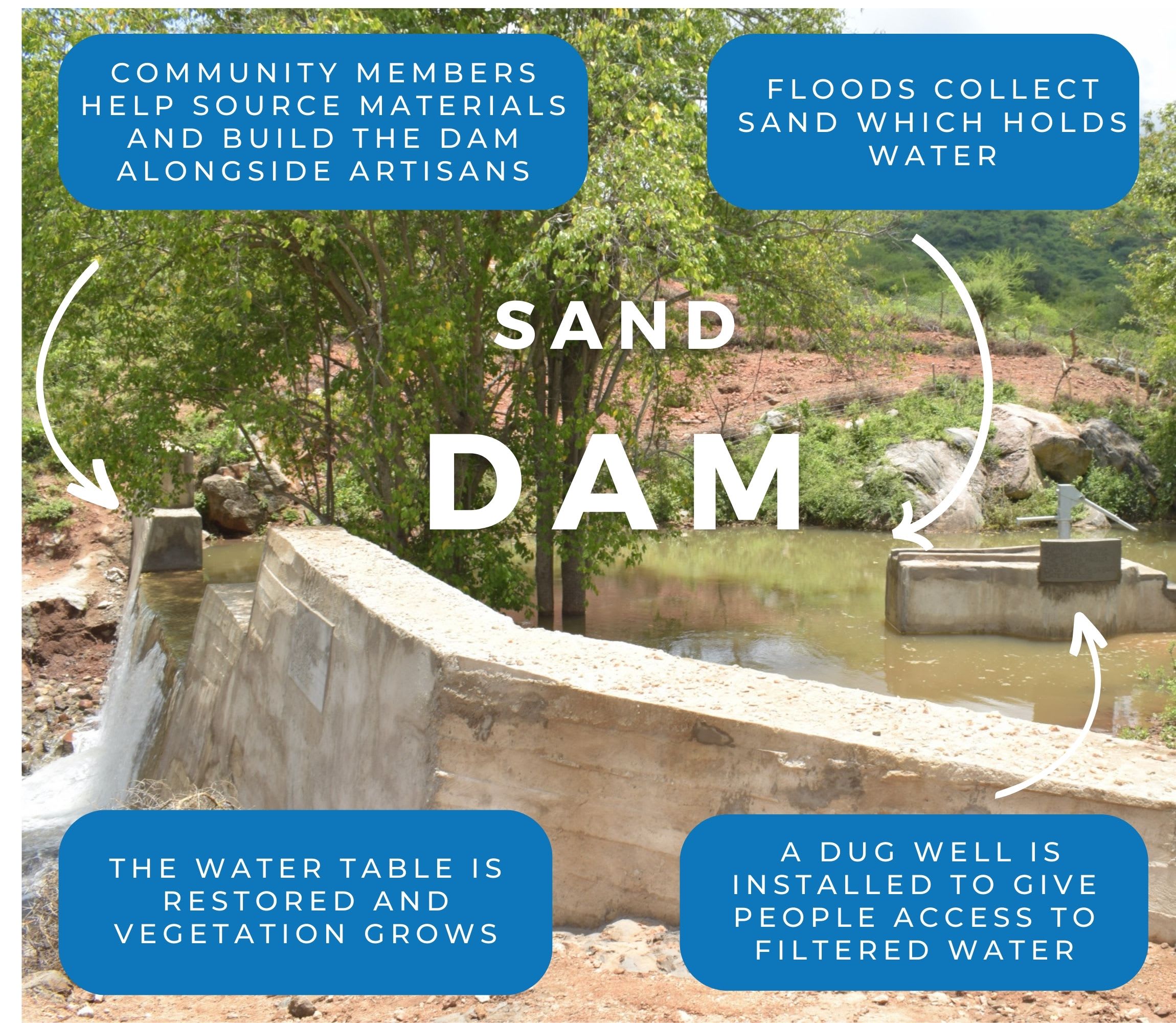The Kasevi Kyamboo Community is home to over 1,200 residents who face daily hardship in their search for water. The community currently depends on a distant, open surface water source that is unsafe, seasonal, and contaminated.
Fetching water often takes between two to four hours per trip, with residents, mostly women and children, walking long distances through rocky, steep terrain under the scorching sun. This exhausting task leaves little time for farming, studying, or other productive activities.

The contaminated earth dam water source.
The available water is visibly polluted, with a greenish color, foul smell, and salty taste. During dry seasons, the source often dries up completely, forcing families to seek water in neighboring villages, which increases strain and conflict over the scarce resource.
"Most community members often complain of various gastrointestinal issues such as stomachaches, nausea, vomiting, and diarrhea after drinking the available water at the earth dam," Field Officer Alex Koech shared.

Thirty-eight-year-old Faith Kioko shared about dirty water's impacts on her family: "I’m deeply concerned about the safety of our current water source because the earth dam we rely on is open and unprotected. It gets contaminated easily by animal waste, dust, and other pollutants. Just recently, my daughter contracted typhoid after drinking water from the dam, and it was a painful and expensive experience for us. The thought that something as basic as drinking water could make our children seriously ill is very worrying."
"The biggest issue is that our earth dam dries up quickly, especially during the long drought periods. The area receives little rainfall, and when the dam finally fills, it's still unsafe because it’s contaminated and not enough to meet everyone’s needs. Also, the journey to the dam is tiring due to the hilly terrain, so we can’t make many trips in a day. This makes water very scarce in our homes," Faith said.
"My daughter got sick recently and complained of a stomachache. As usual, I knew it could be typhoid or amoeba because we drink water from the earth dam, which is often contaminated. I had to sell one of my chickens so that I could get money to cover the medical costs. Cases of water-related infections are usually heartbreaking and expensive for us because we reap very little from our farms," she continued.
"I could not focus on my daily activities like fetching water or conducting household duties, and my daughter could not go to school as well because she was sick," Faith said.
"I think it is unfortunate for us to live in a manner where getting enough clean water is a struggle and impossible. However, we have to bear with the situation because we have no better options," Faith lamented.

Faith makes the long trip with water home.
We plan to install a sand dam and an accompanying protected dug well so life for Faith and her family can transform. With a safe, reliable, and nearby source of clean water, their health will improve, they will have time for education and farming, and their resources can be allocated to building a better future.
"To me, water truly is life. It means health, cleanliness, and the ability to take care of my family. Without clean water, we get sick, and it becomes hard to manage our homes or farms. Water is important for everything—from cooking and drinking to growing food and keeping our children clean and safe. If we had enough clean water, our lives would be healthier, easier, and more hopeful," Faith concluded.
Solving the water crisis in this community will require a multifaceted system that will work together to create a sustainable water source that will serve this community for years to come.
Steps Toward a Solution
Our technical experts worked with the local community to identify the most effective solution to their water crisis. Together, they decided to construct a sand dam and a protected dug well.
Sand Dam
Sand dams are sought-after, climate-smart, and lasting water solutions providing hope and resilience to communities in arid Southeastern Kenya. Think of them like giant sandboxes constructed in seasonal rivers that would typically quickly dry up after the rainy season. Instead of holding water like traditional dams, they collect sand and silt.
When infrequent rains do come, these dams catch a percentage of the river's flow, letting most of the water continue downstream to other communities. But here's the magic: the sand they collect acts like a natural filter, holding onto water long after the river's gone dry. Then, wells are constructed nearby, creating a reliable water source even during the driest times.
And the benefits don't stop there! In communities impacted by climate change, sand dams replenish groundwater and prevent soil erosion. Even during severe droughts, the consistent water supply from these sand dams allows farmers to thrive, giving way for enough food not only for their families but also to sell in local markets.
The most remarkable aspect of sand dams is how they involve the local community every step of the way, giving them a sense of ownership and pride in solving their own water shortage and managing their own water resources.
This sand dam will be connected to a protected dug well to make the water more accessible.
Community Education & Ownership
Hygiene and sanitation training are integral to our water projects. Training is tailored to each community's specific needs and includes key topics such as proper water handling, improved hygiene practices, disease transmission prevention, and care of the new water point. Safe water and improved hygiene habits foster a healthier future for everyone in the community.
Encouraged and supported by our team's guidance, the community elects a water user committee representative of its diverse members. This committee assumes responsibility for maintaining the water point, organizing community efforts, and gathering fees to ensure its upkeep.

 Sand Dam
Sand Dam
 Rehabilitation Project
Rehabilitation Project


















